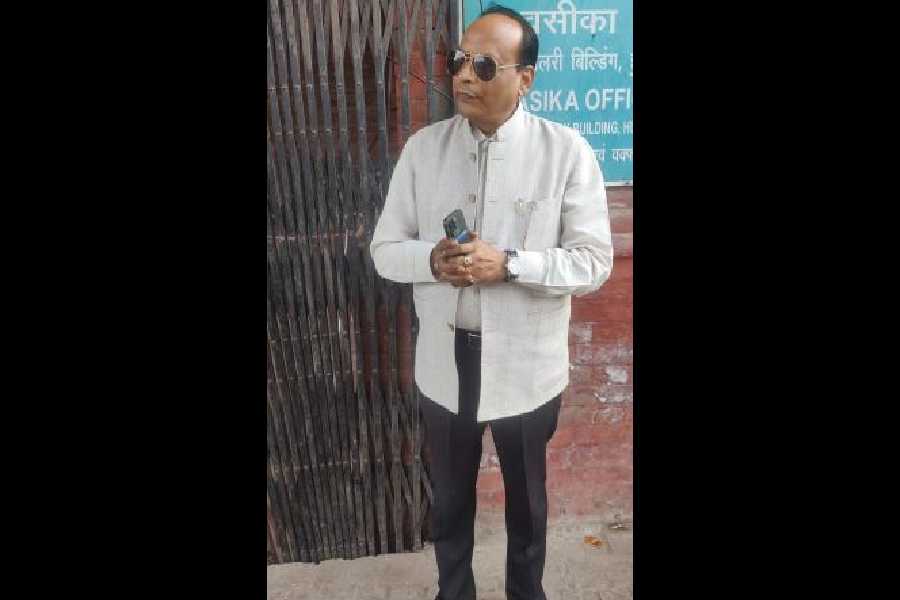Mumbai, May 28 :
Mumbai, May 28:
Call it the sati city.
The cult of Rani Sati - the presiding deity of widows burnt on their husbands' pyres - is thriving in a prosperous suburb of cosmopolitan Mumbai.
One of the congested roads that branch off from the east of Malad station leads to a white temple that houses the goddess Rani Sati. The shrine, behind an iron door, is the seat of the goddess represented by a metal trishul. But just above the shrine is a framed picture of a woman going up in flames on a pyre with her husband's corpse lying on her lap.
'There would be a problem if we had a Rani Sati idol in the mandir,' admits a pujari.
The temple attracts a huge number of devotees. The annual sati festival, held in the temple precincts on the amavasya (new moon night) in the month of Bhadra, is a huge crowd-puller.
The temple is the fulcrum around which an entire area inhabited mainly by Rajasthani residents and dedicated to the goddess has grown.
Rajasthan still reveres Rani Sati and is the same state from where Roop Kanwar hailed.
Not so long ago, a stretch of a flyover on the highway adjacent to the Rani Sati Marg was named Rani Sati Flyover. The road that leads to the temple is called Rani Sati Marg. The Rani Sati Janata Tripti Kendra, a free drinking water distribution centre, also enjoys pride of place in the locality. The two-storey building has a huge frieze of the ubiquitous widow burning with her husband on the façade of its second floor.
On Rani Sati Marg flourish housing societies named after the goddess. The police chowki there is also named after Rani Sati.
'The Rani Sati Marg was renamed about 20 years ago. But the flyover came up two years ago,' says Ram Barot, a BJP councillor from Malad.
Nobody in the area seems to mind. Nobody even seems to have remembered Roop Kanwar or even heard of her. All they know is that Rani Sati is a powerful goddess.
But Shanti Devi, whose father Dwarka Prasadji Nevatia founded the temple more than 50 years ago, is uncomfortable speaking to reporters, though she insists that Rani Sati has nothing to do with the actual sati practice.
'Rani Sati is actually Sulochana, wife of Abhimanyu. In Mahabharata, it is written that after Abhimanyu died, Sulochana decided to burn on the pyre. But Krishna asked her not to because she was pregnant,' she says.
'Sulochana was reborn as Narayani, who came to be worshiped as Rani Sati. My father, after coming here from Rajasthan about 50 years ago, founded this temple. Our priest is from Rajasthan, too. All Rajasthanis from the area come to worship at the temple.
'After a woman died in rural Rajasthan some years ago, we had some problem. Since then, we have been careful,' she adds.
The Commission of Sati (Prevention) Act, 1987, framed after Roop Kanwar was burned with her husband's body in Deorala, Rajasthan, prohibits temples glorifying a woman who committed or was made to commit sati, though not temples dedicated to a goddess. But the Act adds that 'glorification' of sati extends to: 'The supporting, justifying or propagating the practice of sati in any manner...'
The powers that be have no problem, however. 'People from the locality believe in the goddess,' says Barot, third time councillor from the area.
'It is a question of faith.'
 Monday, 10 November 2025
Monday, 10 November 2025









